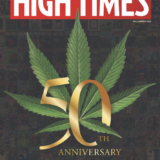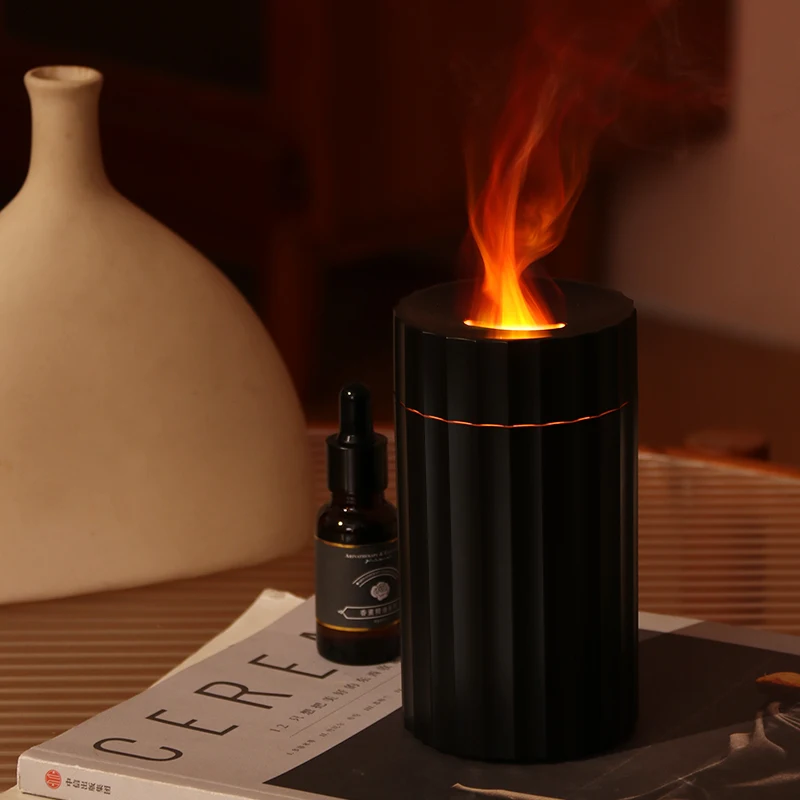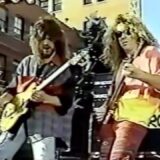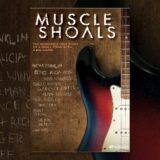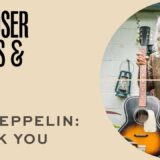John Michael “Ozzy” Osbourne has passed away at the age of 76. Known to most as the frontman of Black Sabbath and a solo force of nature, Ozzy wasn’t just the godfather of heavy metal — he was one of us. A weed-smoking, boundary-breaking, chaos-loving rock and roll outlaw who never stopped waving the freak flag, even when the rest of the world begged him to tone it down.
Ozzy didn’t just play music that stoners loved. He lived it. Every blown speaker, every thunderous Sabbath riff, every moment of madness on stage or screen was touched by the same rebel spirit that flows through this community.
The Sound and the Fury: Ozzy’s Legacy in Music and Culture
Ozzy Osbourne didn’t just sing the soundtrack to generations of outcasts, rebels, and stoners; he was the soundtrack. His voice was the electric howl in a world too buttoned-up to deal with the weirdos and wild ones. From the back alleys of Birmingham to the stages of the world’s biggest festivals, Ozzy changed what music could sound like, what it could feel like, and who it was for.
Black Sabbath and the Birth of Heavy Metal
Before Black Sabbath, rock was loud. After Black Sabbath, it had teeth. Formed in 1968 with Tony Iommi, Geezer Butler, and Bill Ward, Sabbath didn’t just tweak the blues — they dragged it through the graveyard and set it on fire. Their music was slow, heavy, and filled with the existential dread of working-class life. And right in the middle of it was Ozzy, wailing like a banshee from another dimension.
The first four Sabbath albums, Black Sabbath, Paranoid, Master of Reality, and Vol. 4, were seismic. These records practically invented heavy metal, doom, and stoner rock all in one shot. Songs like “War Pigs,” “Iron Man,” and “Children of the Grave” didn’t just sound angry. They were warnings. They were visions. And they were blaring out of every stoner van, basement jam session, and midnight radio station across the world.
Ozzy’s voice, soaring, cracked, unmistakable, cut through the fuzz like a siren. It wasn’t trained or pretty. It was raw truth. When he screamed, it sounded like someone waking up from a nightmare they couldn’t escape. Which made sense. He’d lived one.
The Solo Years: Reinvention and Madness
After being fired from Sabbath in 1979, most people thought Ozzy was done. But like a phoenix made of amp feedback and beer cans, he came back stronger. With guitarist Randy Rhoads at his side, he dropped Blizzard of Ozz in 1980, launching his solo career with “Crazy Train,” “Mr. Crowley,” and “Suicide Solution.” It wasn’t just a comeback. It was a declaration of war on the idea that aging rockers had to fade away.
Throughout the ’80s and ’90s, Ozzy’s solo work pushed the boundaries of what heavy metal could be. He embraced theatrics, leaned into his darkness, and never stopped chasing the next riff. “No More Tears,” “Bark at the Moon,” and “Shot in the Dark” kept him at the top of the game while dozens of his peers faded into nostalgia acts.
Ozzy wasn’t interested in nostalgia. He wanted noise. He wanted mayhem. And somehow, in all that chaos, he kept evolving.
Cultural Impact: From Satanic Panic to Reality TV Saint
Ozzy’s music was the subject of Senate hearings, church protests, and parent group boycotts. He was accused of promoting suicide, satanism, drug use, and madness. What they didn’t understand was that Ozzy wasn’t glamorizing darkness. He was surviving it. And in doing so, he helped millions of fans feel seen, heard, and a little less alone.
In 2002, Ozzy reintroduced himself to the world with The Osbournes, MTV’s hit reality show that flipped the script on celebrity life. Instead of a rock god in a castle of sin, we got a bumbling, hilarious, constantly confused Ozzy trying to find the TV remote while Sharon kept the household together. It was chaotic, real, and pure gold. And yes, he admitted years later he was “stoned the whole time.”
That show didn’t just revive his career. It made him relatable to an entirely new generation. Your parents may have feared him in the ’70s. Your little sister was watching him try to find his slippers on cable.
Why He Was and Still Is an Icon
Ozzy Osbourne was more than his music, his scandals, or his bat-eating headlines. He represented a kind of authenticity that’s almost impossible to find. He didn’t pretend to be perfect. He wasn’t polished. He struggled, and he let us see that struggle, sometimes with humor, sometimes with horror. But always honestly.
For the High Times community, Ozzy was one of the real ones. He smoked the weed. He made the music. He lived the life. He never chased trends, never sold out his strangeness, and never forgot where he came from.
His impact can be heard in every doom-metal record, every psych-stoner album, and every gritty riff that dares to slow things down and turn the volume way up. His fingerprints are all over metal, but also in fashion, film, pop culture, and even the normalization of cannabis and mental health conversations in the public square.
There will never be another Ozzy. Not because others won’t try, but because Ozzy never tried to be anyone but Ozzy. And that’s what made him immortal.
The Sweet Leaf Was Always Burning
Ask any real head and they’ll tell you, Sweet Leaf wasn’t just a Sabbath track. It was an anthem. Recorded in 1971 after the band discovered a particularly potent stash in Dublin, the song kicks off with Tony Iommi coughing after a hit. That wasn’t a gimmick. That was real. Ozzy loved to talk about that session, the room thick with smoke, the creativity flowing like lava, the band riding the high and crafting what would become the foundation of stoner metal.
Years later, Ozzy graced the cover of High Times in 1999 with Tony Iommi. The shoot involved mountains of fake weed and a wild sense of déjà vu. During the interview, Ozzy didn’t try to polish anything. He talked about getting high, getting lost, and somehow finding himself in the madness. The High Times staff still talks about that day like it was a pilgrimage. And it was.
From Chaos to Cult Hero
Ozzy’s story is full of contradictions. He was a global rock star, yet always felt like an outsider. He battled demons, addiction, illness, and fame, but never lost the part of himself that spoke to misfits and dreamers. When he was lost in the haze, he found a strange kind of clarity. And when the world tried to laugh him off, he leaned in harder. He made the freaks feel like family.
You didn’t have to meet him to know him. If you were the kid getting high behind the bleachers, if you were the one blasting Sabbath in your garage, if you lit up and let your mind melt into the fuzzed-out solo of Fairies Wear Boots, Ozzy was there. He understood you. He was you.
Legacy Lit in Smoke
Ozzy was never a preacher, but he knew the value of plant medicine. In recent years, he admitted to microdosing marijuana for his health, calling it his “spark.” He never dove into psychedelics the way some do today, but he respected the plants. He believed cannabis should be legal. He thought it was less dangerous than booze, less toxic than tobacco, and far more fun.
He leaves behind not just a discography that defined generations, but a cultural footprint that’s forever green. The cannabis community has always claimed Ozzy as one of our own. He was loud, raw, real, and unfiltered. He didn’t just talk about rebellion; he lived it, inhaled it, and exhaled it back into the mic.
Recap: Ozzy Osbourne’s Infamous High Times Interview (March 1999)
When High Times put Ozzy Osbourne and Tony Iommi on the cover in March 1999, it wasn’t just a tribute to two heavy metal legends; it was a weed-soaked time capsule of Black Sabbath’s chaotic, cannabis-fueled heyday.
A Life Measured in Smoke
Ozzy didn’t hold back. He told High Times that in the early Sabbath days, they weren’t just dabbling; they were consuming pounds of weed, sometimes by the sack. Their daily ritual began and ended with joints, and the haze of cannabis was the backdrop to Sabbath’s heaviest tracks, including “Sweet Leaf,” which was inspired by their first hit of potent Irish hash.
“We used to smoke pounds of the shit, man… Wake up in the morning, start the day with a spliff, and go to bed with it.”
This wasn’t just storytelling; it was testimony. Ozzy credited cannabis with enhancing their creative energy, giving him focus before going on stage, and providing relief from the storm inside his head.
Madness at the Border
One of the standout stories from the interview was Ozzy’s memory of trying to smuggle weed across the border from Detroit into Canada using a homemade contraption built from a fish-tank pump. Sabbath were weed pirates risking arrest, failing often, and laughing about it decades later.
“At the Canadian border, we got even worse, man…”
It painted a portrait of a band who didn’t just sing about rebellion — they lived it, even when it meant facing the wrath of border agents with bloodshot eyes and backpacks full of bad ideas.
Cannabis vs. Cigarettes
Ozzy also used the platform to make a clear argument for cannabis legalization. While he openly battled addiction to harder drugs and alcohol, he separated weed from the rest, seeing it not as a problem, but as a plant with healing and creative power.
“I couldn’t smoke as many joints a day as I can [cigarettes]… Gotta legalize pot. I’m all for it.”
To Ozzy, pot was natural. Tobacco and other processed substances were worse. His views, shared with High Times in 1999, echoed ahead of the cultural curve, calling for plant freedom long before mainstream politicians dared.
Why It Mattered
This interview wasn’t just memorable; it was legendary. It captured Ozzy in full mythic form, simultaneously unhinged and deeply human. Fans got a raw look at the stoner roots of Black Sabbath, but also saw a glimmer of the man behind the madness: honest, funny, and surprisingly thoughtful about the role cannabis played in his life.
The High Times 1999 feature remains one of the most re-shared and re-quoted stories from the magazine’s rock archives. For the cannabis community, it cemented Ozzy not just as a metal icon but as one of us.
A Final Blaze
Today, joints are being lit around the world in honor of the man who gave us Sweet Leaf, Children of the Grave, and a thousand reasons to scream into the night. He was weird, he was wild, and he was honest about all of it.
Rest easy, Ozzy. The smoke will never clear.
This article is from an external, unpaid contributor. It does not represent High Times’ reporting and has not been edited for content or accuracy.


